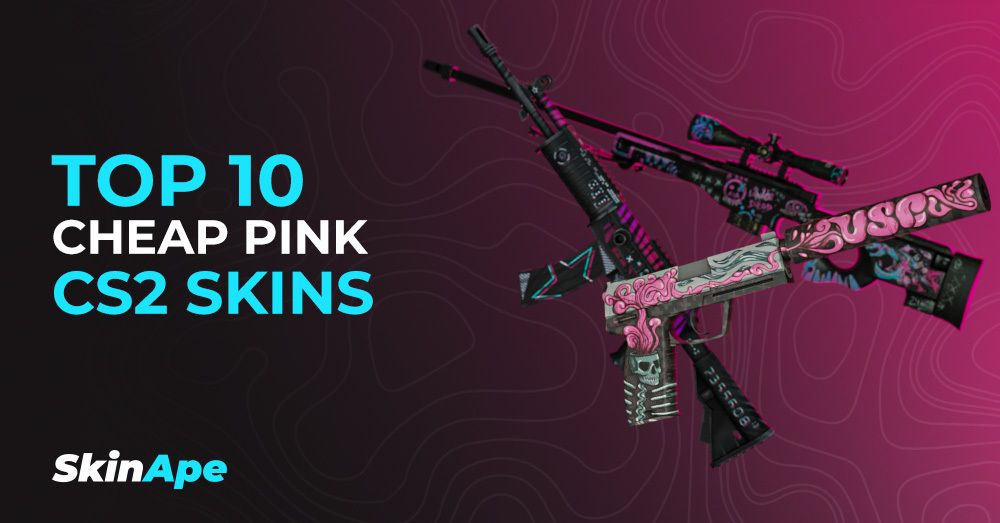Bully Tee Blog
Your go-to source for everything related to bullies and tee culture.
Skin Deep: Why CS2 Skins Are the New Currency in Gaming
Discover why CS2 skins are revolutionizing gaming currency and how they’re changing the world of digital assets. Don’t miss out!
Exploring the Economics of CS2 Skins: The New Age of Digital Currency
The rise of CS2 skins has revolutionized the gaming industry, transforming digital items into a popular form of digital currency. Unlike traditional currency, the value of these skins is often determined by their rarity, demand, and aesthetic appeal. Players and collectors alike engage in a vibrant marketplace where transactions can fluctuate wildly, making skin trading not just a hobby, but a potential source of income. As more players invest in these virtual assets, the economics behind CS2 skins presents an intriguing case study in supply and demand within digital ecosystems.
Furthermore, the integration of blockchain technology and non-fungible tokens (NFTs) with CS2 skins adds another layer of complexity to this digital economy. For instance, NFTs provide proof of ownership and authenticity, which can enhance the perceived value of certain skins. As this market continues to evolve, it is essential for gamers and investors alike to understand the trends and factors that influence skin valuation. Keeping an eye on trends, player sentiment, and community engagement can help enthusiasts navigate this new age of digital currency and make informed decisions in a rapidly changing marketplace.

Counter-Strike is a highly popular tactical first-person shooter game that emphasizes teamwork and strategy. Players can enhance their gameplay experience by learning techniques such as clear decals cs2, which helps improve visibility in intense combat scenarios.
How CS2 Skins Have Transformed the Gaming Market
The introduction of CS2 skins has significantly reshaped the gaming market, attracting both casual players and serious investors alike. These virtual items, which allow players to customize their in-game weapons and characters, have created a vibrant cosmetic economy around the game. As players seek to enhance their gaming experience and showcase their unique styles, the demand for high-quality skins has surged. This has not only led to a booming marketplace where rare skins can sell for hundreds or even thousands of dollars but has also encouraged developers to innovate continuously by releasing new designs that captivate the community.
Moreover, the influence of CS2 skins extends beyond aesthetics; it has paved the way for various monetization strategies within the gaming industry. Companies are now exploring microtransactions and loot boxes, having observed the success of skin trading in CS2. This transformation has inspired other games to adopt similar models, increasing the revenue potential for developers and creating a competitive environment. As a result, skins have not only become status symbols among players but also a legitimate investment opportunity, further solidifying their role in the gaming economy.
Are CS2 Skins the Future of Online Transactions in Gaming?
In the rapidly evolving landscape of online gaming, CS2 skins have emerged as a revolutionary element in virtual economies. Players are increasingly investing in these cosmetic items, which enhance the visual appeal of their characters and weapons, leading to a burgeoning market for trading. The inherent rarity and uniqueness of CS2 skins create a sense of value akin to traditional collectibles, which incentivizes gamers to engage in transactions. Furthermore, platforms for buying and selling skins often incorporate blockchain technology, offering transparency and security, thereby reinforcing the case for CS2 skins as a cornerstone of future online transactions.
The success of CS2 skins can serve as a blueprint for other gaming titles, prompting developers to explore similar monetization strategies. With the integration of real-world currency into gaming economies, players can now treat skins as digital assets that appreciate in value over time, much like stocks in a market. This not only encourages ongoing player engagement but also fosters a community-driven economy where players can profit from their investments. As more players recognize the value of these digital items, we may very well see a paradigm shift in how online transactions are structured in the gaming industry.